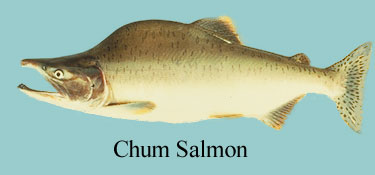


The study of nutrition is the practical application of our knowledge of the physiology of digestion and metabolism. Aquaculture is gaining recognition as a way of increasing the supply of high quality human food. In order to grow animals efficiently, we must understand their nutrition. There are key differences between fish and terrestrial farm animals that are advantageous for fish farmers and other differences that are a liability. Fish can have feed conversion ratios (dry weight of feed fed/dry weight of gain) of less than 2, which are some of the highest feed conversion ratios in animal agriculture. This efficiency in the conversion of food to flesh is advantageous. On the other hand, many fish require expensive, protein rich diets that negate any advantage in feed conversion. The physiological reasons behind the advantages and disadvantages are explained below
All animals create ammonia during the catabolism of proteins. Ammonia is toxic and its accumulation in the body cannot not be tolerated. Mammals use energy to turn ammonia into less toxic urea in the liver. Urea is water soluble and mammals excrete it in the urine. In order to reduce water weight for flight, birds create another high energy nitrogenous waste product, uric acid, which is excreted with the feces. Since fish have constant exchange with water at the gill, they can excrete ammonia directly, without conversion, as soon as it is created (See Ch. VIIA). Mammals and birds pay a caloric penalty for eating protein. When carbohydrate or fat is metabolized, about 5% of the assimilated energy is used in changing the structure of the food molecules into forms the body can use and the remaining 95% can be used for maintenance and growth. When mammals and birds metabolize protein, however, the penalty increases to about 15% because energy must be used to build urea or uric acid and these energy containing substances are excreted form the body and lost.
|
Since fish do not have to expend energy to change ammonia to urea or uric acid, they do not have to pay the energy expense to use protein for food as birds or mammals do. Fish pay about a 5% penalty whether protein is part of the meal or not. Since fish do not pay a penalty for eating protein, they can direct more of the energy in food towards production.
The other way in which fish are more efficient in their conversion of food energy into production is that fish do not use energy to maintain a body temperature that is above ambient temperature. Mammals and birds use energy constantly to keep their body heat up. In cold temperatures this is fairly substantial. So, poikilothermy and a lack of a penalty for protein consumption are the reasons that fish can have high feed conversion ratios.
In terms of both biomass and diversity, the terrestrial environment is dominated by herbivorous animals. Compared to herbivores, carnivores are in the minority. In the aquatic environment, fish are the dominant vertebrate and most are carnivorous. Herbivorous fish exist, but are quite rare compared to carnivorous and omnivorous fish. Moreover, there are no ruminant fish, while many terrestrial mammals are ruminants.
 |
 |
 |
In the U.S., most fish culture is directed toward intensely carnivorous trout and salmon, or somewhat omnivorous channel catfish. Fish that are more fully omnivorous, e.g. tilapia, are less commonly produced in the U.S., but commonly imported form tropical countries. In salmonid rations, you have to feed very high percent protein (30 to 40%). Not only is the percentage of protein high but the majority of this protein must come from animal sources. This is because the amino acid balance is different between animal and plant protein, i.e. all the essential amino acids are present in plant protein and they are all present in animal protein, but the percentage of individual amino acids tends to differ between animal and plant sources and less total protein needs to be fed if the amino acid profile of the feed is similar to the body of the animal. Moreover, carnivorous fish like trout do not tolerate much carbohydrate in their diet (it cannot exceed 20% starch and sugar), and it is difficult to feed enough plant protein to meet their amino acid requirements without exceeding this limit, since plants are so rich in carbohydrates. As a consequence, the best protein source for carnivorous fish is fish meal, which means feeding fish flesh to grow fish flesh. This is obviously expensive and not a very ecologically sound way of growing food. An irony of carnivorous fish aquaculture is that it increases the use of wild ocean fish. Growing trout and salmon is like raising lions and tigers for food. In fact, in the years before scientific ration formulation allowed a complete trout ration to be made from dry feedstuffs, trout were successfully raised on ground beef liver. Channel catfish are more tolerant of plant material in their diet, but most catfish rations include a sizable percentage of fish meal.
The goal of production animal nutrition is the use of a scientifically formulated least cost ration. This can only be done if the nutritional requirements of the animal have been determined. The precise needs for crude protein, fat, carbohydrate, vitamins and individual amino acids was not determined for any fish until the 1950's when the necessary research for rainbow trout was completed. At this time, complete nutritional requirements are only known for salmon and channel catfish as well as rainbow trout, though this will probably be determined soon for tilapia. Once the nutritional requirements are known, a ration can be formulated that meets those requirements by combining various commercially available feedstuffs (soybean meal, corn meal, fish meal, feather meal, etc.) in the combination of ingredients that meets the fish's nutritional needs at minimum cost. The formula is then mixed and extruded into pellets. Such dry diets have a fairly long shelf life and are easy to store and handle.